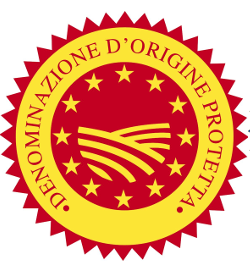What I found in this article about Ukrainian embroidery is similar to what I have seen, read, and heard from weavers and textile artists in other cultures — including in the Americas and in Sardinia. I’ve been meaning to write more about designs, and the linked article was a perfect prompt to put here some of what I discuss during presentations. ~ KMK
Unsurprising similarities exist in the design and motifs of traditional textiles from widely diverse areas of the globe. These similarities can be attributed to several factors, technical and otherwise.
Design elements are, in part, dependent upon the structure of a loom and fabric. The warp and basic weft of fabric constitute a framework into and upon which other fibers can be added in various combinations, yet the cross-fibers always exist as a defining matrix.* Different types of looms can also dictate what types of patterns and weaves an artist uses. For example, certain hand weaves that are possible on a basic horizontal loom may be impossible or untenable to create on a vertical loom. Likewise, some techniques used on a vertical loom may not be practical for use on horizontal looms.
As with any technology, weavers using a certain type of loom are likely to develop similar techniques and patterns regardless of the weavers’ physical proximity to one another. Worldwide, traditional cultures are linked to agriculture, nature, and the cosmos energetically as well as symbolically, and designs reflecting and honoring these motifs are common. Cross-cultural trade and innovation spread technology and design, and there’s ample evidence that prehistoric cultures the world over shared art forms, imagery, weaving, and other technology and scientific knowledge often far more advanced than most modern historians care to admit.
Most of us wonder about the meaning and origin of the symbols we see in textiles. “Tell us about the symbolism of the designs” is one of the most common questions I’m asked when giving presentations, and weavers, embroiderers, artists, and museum curators also hear this question regularly. While we can give some general answers, the true or deeper level of meaning of a symbol may may not always be known or conveyed. In some instances, the ancient meaning of a symbol may have truly been forgotten over time. However, in many cultures, weavers and other artists may not want to share the meaning of their designs, especially with outsiders, because the designs often have deep cultural or personal meaning that’s vulnerable to misuse through cultural appropriation and/or commercial exploitation.
Traditional designs of many cultures often have symbolic and sacred meaning, and these designs are often incorporated into textiles used for protection and rituals. Protective designs and patterns may be woven, embroidered, or dyed on clothing or items worn over the heart, chest, private parts, or other areas of the body. These items are often gender-specific and incorporate designs intended to offer energetic protection and benefits to men and women in traditional roles.
Certain clothing or woven items may be made for specific ceremonies (birth, coming of age, marriage, invoking a particular deity or aspect of nature, blessing crops, death, and so forth) and using such a textile out of context could be disrespectful — or even bring malefic influences. For this reason, weavers and textile artists in some traditions intentionally change the designs they use in textiles that are to be used or sold outside the community.
Of course, there are also traditional designs that may convey other types of meaning, or be purely fanciful. Designs handed down within a family may indicate position or status. Some family or local designs may also be whimsical patterns created and passed along within the locale.
Beyond the surface design obvious on an item of clothing, rug, or other weaving, there’s another key element that makes a handwoven textile special and even sacred: The energy, love, and care the maker puts into the textile as she creates it. This energy is unique to a textile and to the maker. This intangible feeling a handmade textile carries cannot be imparted by the machines that make commercialized textiles. This essence can’t be conveyed by words or photos. This essence is a key part of what traditional handweavers carry forth, even as innovation brings changes to designs and traditions.
* There are some modern artists who shape or eliminate the warp and basic weft.





